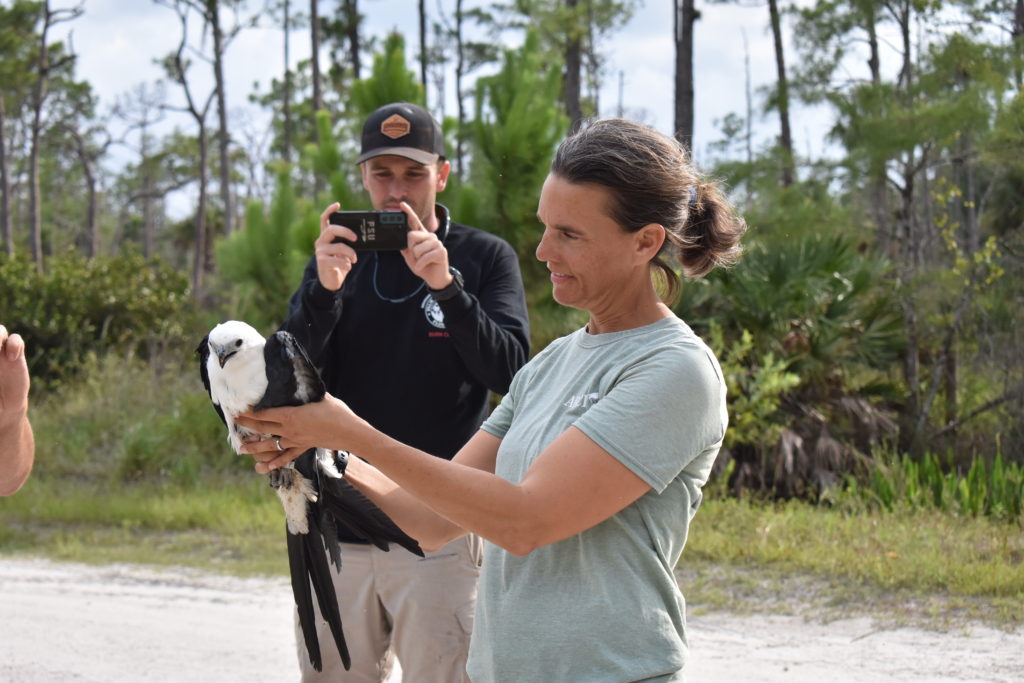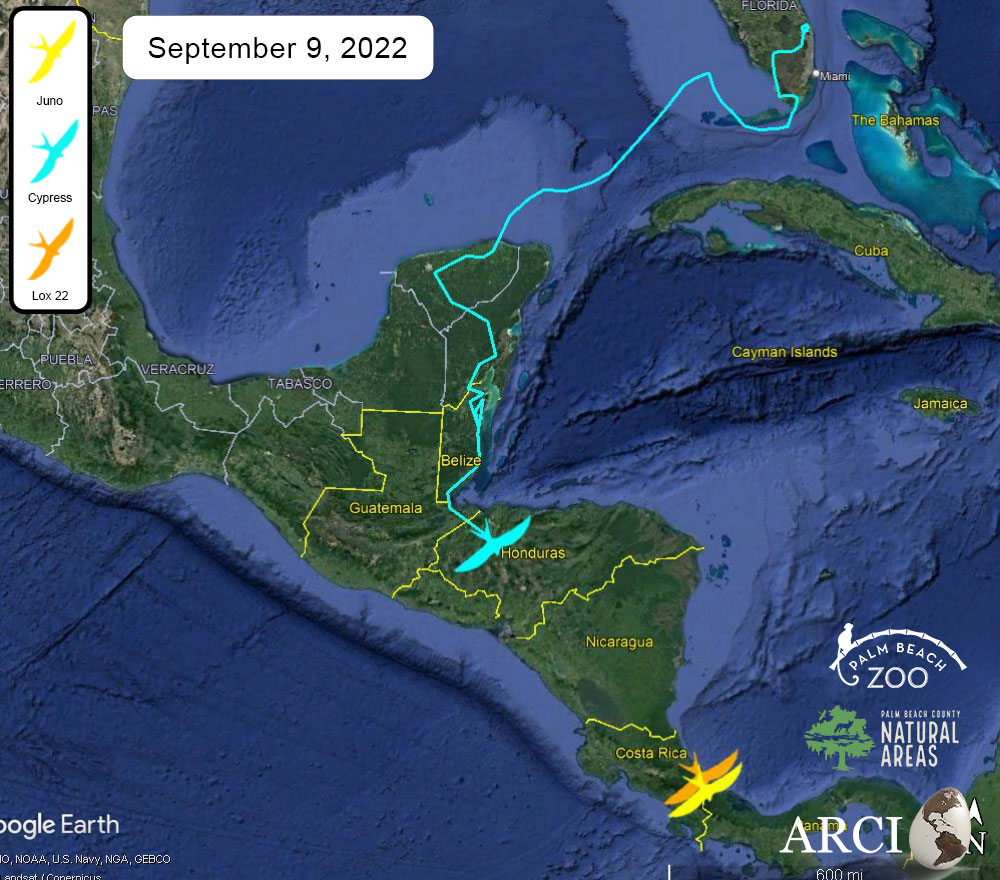Cypress is the last of the Class of 2022 GPS/GSM-tracked Swallow-tailed Kites to migrate. He and two other kites were tagged in Palm Beach County in cooperation with the Palm Beach Zoo and Conservation Society and Palm Beach County Environmental Resources Management (ERM).

Cypress spent his pre-migration right there in Palm Beach County, Florida feeding over the vast natural areas, agricultural fields, and ERM lands. He started south on 26 August, spending his last Florida night in Big Cypress National Preserve. On 27 August he flew down the Florida Keys and left the archipelago around 7pm southbound just east of Long Key State Park. The winds kept him trailing westward about 13 miles south of the Florida Keys until he was pushed north again, passed the Marquesas Keys and then even farther north into Florida Bay. At the longitude of Marco Island in Collier County, the wind must have switched to a favorable tailwind to bring him SSW to the Yucatán after48 hours of over-water flying. He took a nice rest near Tixkokob, near Mérida in the Yucatán of Mexico, a bit farther west than most of our GPS-tracked kites. The next day he was back on track, east to the Caribbean coast and south where he took a stopover in northern Belize for a week. Today, 9 September, he has arrived in Honduras.
Meanwhile, Juno and Lox 22 continue south through Central America. Their last locations were just miles apart from one another in Costa Rica, inland of Limón. Juno passed this location on 24 August and Lox 22 passed on 7 September.

We have been using GSM/GPS tags since 2016. This is an ever-changing, cutting-edge technology that is safe for the birds and affordable for our study objectives. This technology, however, can be tricky. Sometimes data doesn’t upload for days, weeks, or months because the kites are too far from cell phone towers to upload their data. Sometimes the tracking units are not compatible with the types of available towers (3G, 5G, LTE etc.). We are hoping the kites will pass near compatible towers, and we can continue to follow them all south!
A big thanks to our collaborators at Palm Beach County Environmental Resource Management and the Palm Beach Zoo & Conservation Society. The Palm Beach Zoo & Conservation Society, in conjunction with long-time Zoo sponsor Florida Power & Light Company, have generously provided funding for the solar-powered GSM-GPS transmitters needed to continue this vital conservation effort.

Leave a Reply